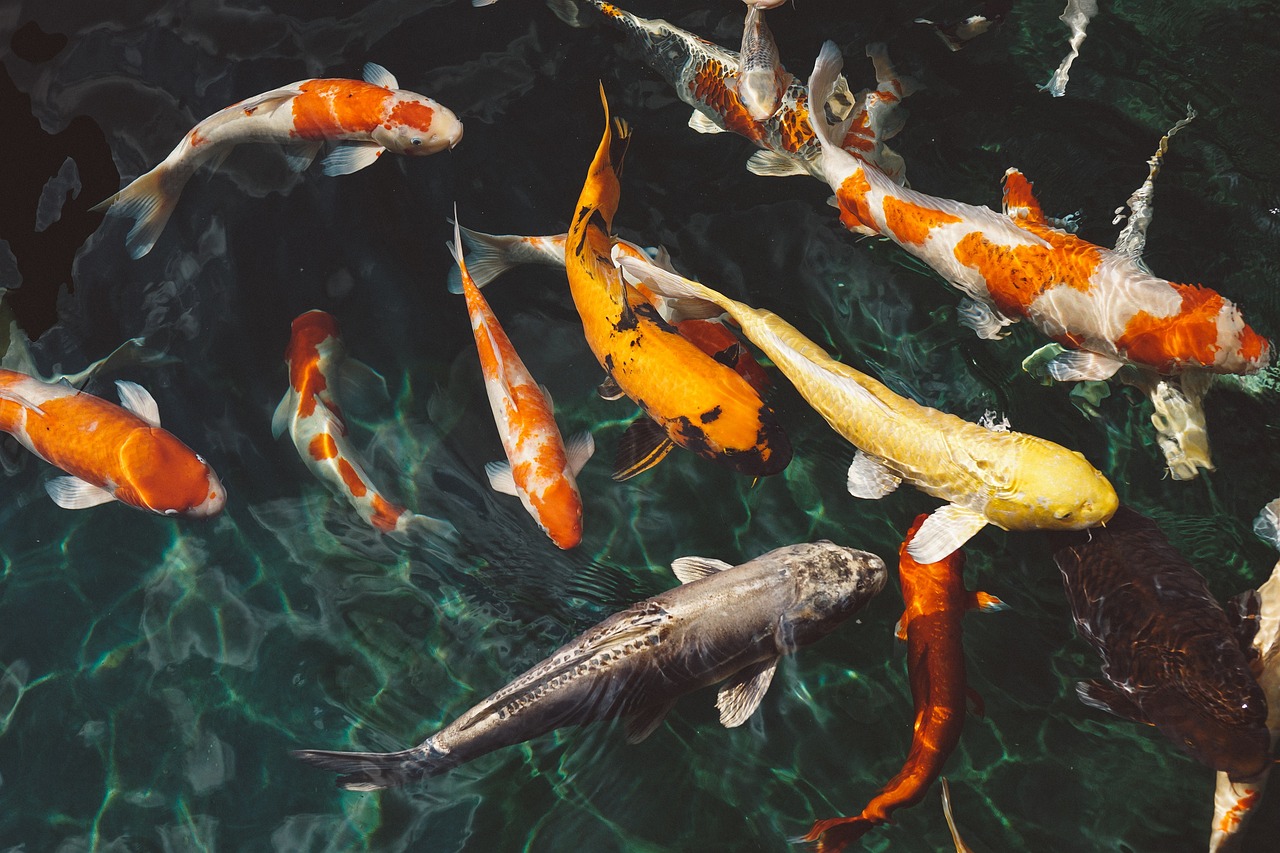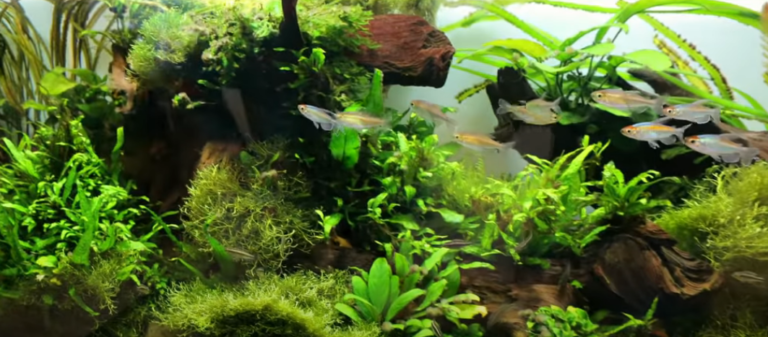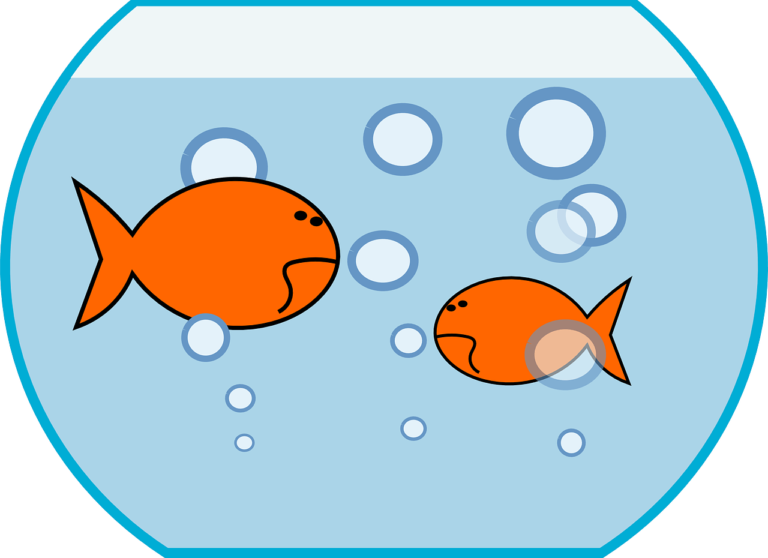Having an aquarium can be a great way to relax, and adds beauty to any home or office space. However, it is important to consider several different factors when selecting the right fish for your tank. Compatibility between species of fish is an important factor since different species have different habits and lifestyles that can lead to stress in their environment. Tank size is also crucial; choosing a fish that fits into the available space in your tank will help create balance and harmony among your aquatic community. Additionally, ensuring the right water conditions for each type of fish – including temperature, pH and hardness – will guarantee its health and wellbeing within the tank. Understanding these considerations before you start stocking your aquarium will help keep your fish healthy and happy. Lets dive in and explore some of the key steps you should consider when choosing fish for your aquarium.
Should you choose the fish or an aquarium tank first?
This is a really good question and can be hard to answer. You need to make sure that the aquarium you choose will work for the fish species you want to keep for the long term. If you want to keep larger fish like, freshwater sharks or discus, you need to make sure your aquarium can handle that size of fish you can read more about setting up a fresh water aquarium here.
Tips for Choosing the right fish for your aquarium
Choosing fish for your aquarium does not have to be hard, with a few different steps you can be sure to that the fish you choose is compatible with you tank.
1. Compatibility
Compatibility is one of the most important factors when choosing fish for an aquarium. If you are planning to set up a large aquarium with multiple species, it is essential to select fish that can live together peacefully. Every type of fish has different needs and behaviors, so taking the time to research the right combination of compatible species is key. For instance, certain fish may be peaceful while others may be more aggressive, like cichlids, so mixing potentially violent pairs of them must be avoided. Additionally, each kind of fish requires different temperatures, food sources, and living spaces, so creating a suitable environment for all the inhabitants is necessary. By making informed decisions about the compatibility between different species of fish and their environmental needs, your aquarium will undoubtedly become a beautiful home for everyone in it!
When creating a well-rounded and vibrant fish tank, it’s important to consider compatibility with other fish species. One of the best ways to ensure compatible species get along is by choosing ones with similar temperaments. If a tranquil and peaceful atmosphere is desired, then species like tetras or guppies would be recommended, as they are often known for their docile dispositions. On the other hand, more active personalities might find better companionship in fish like mollies or danios. These species tend to have more energy and could create an exciting living environment for all tank inhabitants. Taking the time to understand each species’ needs allows for greater success when stocking a new aquarium.
When considering compatibility among fish, it’s important to consider their natural habitat and behavior. For example, native fish from the Amazon river basin tend to adapt better with one another as they are accustomed to similar water conditions and have compatible dietary needs. Taking a moment to research the background of your fish can ensure that any newly added inhabitants will comfortably settle into the aquarium. Understanding their behavior and environmental needs is essential for a harmonious living set up in an aquarium.
When it comes to fish compatibility, their natural habitat and behavior are two key factors that should be carefully considered. While fish from different regions have the potential to live in harmony, fish from similar environments tend to be better matched. For instance, those who originate from the Amazon river basin may do well with one another due to their shared understanding of water conditions and dietary requirements. This makes them more suited for cohabitation than species that call different regions of the world their home.
Compatibility between fish of different sizes is a critical component of any aquarium. Large fish can be predators, and if placed in an environment with small fish, they will quickly hunt down the smaller ones. Even two fish of the same species can quickly become incompatible due to size differences; it’s important to always check the maximum size of each type of fish before adding them to their shared habitat so they won’t be preying on top of one another. Taking care to separate larger from smaller sized-fish or creating plenty of hiding spaces will create a better environment in your aquarium.
When selecting fish for an aquarium, it is essential to be aware of the size and predatory behavior of each species. Some fish are predators and naturally seek out smaller prey, such as other small fish, which can cause distress and even fatality in a shared environment.
It is important to research and consider all of these factors when choosing fish for your aquarium to make sure that the species you choose will be able to live together peacefully. It is always good to think about a fish’s natural habitat and temperament to determine if they will make good tank mates. If you are unsure, it is always best to consult with an expert at your local fish store.
2. Size
When creating an aquarium, choosing the right type and size of fish is key for a healthy and thriving ecosystem. If you opt for fish that are too large for your tank, it’s likely they won’t have enough space to move around, which can lead to them exhibiting stress behaviors. On the other hand, if your choice of fish is too small for the tank there may be a risk of bullying from other inhabitants or even being eaten by larger species. Therefore, it’s important to carefully consider the size of fish you select before adding them to your tank to ensure all its inhabitants will thrive.
When determining the appropriate size of the fish for your aquarium, you need to consider the size of the tank and how many fish you plan on keeping. A good general rule of thumb is to allow 1 gallon of water per an inch of fish, but this can vary depending on the species of fish and the water conditions of the tank.
When choosing fish that are appropriate for your size of tank you need to take into account the adult size of the fish and not the size they are when you purchase them. Most fish sold in pet stores are still babies because then they are more easily able to adapt to the new tank parameters. Smaller fish such as neon tetras, guppies, and danios, are good for small tanks, while larger fish such as oscars, angel fish and arowanas are better suited for larger tanks.
You also need to consider the bio load of the fish also known as how much waste they produce per a fish. Larger fish can produce more waste than smaller fish and you will need a larger tank to make sure that you water quality stays healthy.
It is also important to be aware of the swimming habits of fish. Some fish prefer to sit in one spot with good water flow while others prefer to be always on the move and require a larger area to swim in.
Choosing fish that are appropriately sized for your tank is going to be one of first steps you need to go through for the health and well being of your tank. Be sure to consider the adult size of your fish before making the final decision. Its always better to have too big of tank instead of too small of tank. This will keep your ammonia spikes down and you will not need to do as many water changes.
3. Water conditions.
Another important part to consider when choosing fish for an aquarium is the water conditions that each fish needs to be healthy. Different species of fish have different requirements for PH, temperature, and hardness. PH is the measure of acidity or hardness of the water. Different species of fish will have different PH preferences. Some fish prefer a neutral PH of 7.0 while others prefer a more acidic environment. It is important to research the pH requirements of each fish to make sure they match the natural conditions of your tank.
Temperature is another important factor when deciding on what species of fish you to choose. Each species of fish has different temperature requirements and it is important to take that into consideration when choosing the fish for your tank.
Water hardness can also be an important factor when choosing which fish species to keep together. Hardness is measured by the amount of dissolved minerals in the water. Different fish species will have different requirements and preferences for water hardness and it is important to choose fish that are prefer the same hardness of the water of your aquarium.
Tank Maintenance
You should take into consideration how much tank maintenance you want to do on weekly or daily basis. If the water conditions that your fish needs are very strict you may need to water changes and test daily to keep your water quality optimized for the health of your fish.
It is always a good idea to test the water conditions of your tank to determine what is the natural pH, and water hardness. If you can choose fish that are naturally good with your water conditions you will not need to do as much maintenance on the tank.
4. Diet
A fish’s diet is an important factor to consider when deciding on what fish species to choose for your tank. Each fish species has its own dietary requirements and nutritional needs, and it is important to choose fish that can eat the same diet.
There are two main fish diet types, herbivorous and carnivorous. Herbivorous fish like plecos and Otocinclus eat plant-based diets, while Oscars and cichlids prefer a meat-based diet.
When selecting fish, make sure that you are researching what foods they prefer to eat. It’s also important to note that some fish prefer a combined diet of both plant and meat-based foods. It is important for the health of your fish that you provide a diet that meets their needs.
You also need to consider the form of food that each species of fish prefers. Some fish like live foods like worms or shrimp, while others prefer food to be flakes or pellets.
Feeding schedule and Frequency
Each fish species will have different feeding schedule and frequency, It is important to take this into account when choosing fish for your aquarium. Some species of fish prefer to be fed only a couple of times a week while others prefer to be fed multiple times per a day.
Choosing fish that can be fed a diet that is similar will make feeding your fish daily a lot easier. This will cut down on the maintenance of your tank because you will not have as much uneaten food, and your water parameters will stay healthy.
5. Expert advice
Seeking the advice of experts is one of the best things you can do when choosing fish for your aquarium. The best places to get advie are from a local fish store that specializes in aquariums. They will have vested interest in making sure that get the right fish for your tank.
When visiting a fish store make sure to ask a lot of questions. You want to come away with enough information to make an informed decision on what fish you should keep in your tank.
Conclusion to choosing fish for an aquarium.
In conclusion choosing fish for your aquarium does not need to be hard. With just little bit of research and some foresight you can have a healthy vibrant tank that is enjoyable to look at.
Faqs
How many fish can I keep in my fish tank?
To determine how many fish can I keep in your fish tank you need to consider the species of fish your want to keep. A general rule of thumb is one inch of fish per a gallon of water but this will vary based on the type of fish and the water conditions in the fish tank. You need to make sure that each fish has enough space to swim comfortably and the bioload that the fish produces is not too high for the tanks size.
What are the best beginner fish for a new aquarium?
Some of the most popular fish species for beginners are neon tetras, guppies, platies, and zebra danios. Each of these species is hardy and easy to care for and can tolerate a wide variety of water conditions in the tank. They are also not very expensive to purchase and this makes a good choice for first time fish owners.
Can different fish species live together in the same tank?
Yes, Different fish species can live together in the same tank as long as the tank is big enough and the species are compatible with each other. You need to take into account the water conditions of your rank like; temperature, hardness, ph level, and flow. You will also need to make sure that the species you want to keep together have a compatible diet and that you can feed the same type of food without harming each species.
How do I know if a fish is compatible with the water conditions in my tank?
The best way to determine if a fish is compatible with the water conditions in your tank is with research. You can research the specific water conditions that each fish needs to be healthy by talking to your local fish store or searching online. You need to pay close attention to water hardness levels, ph levels, and temperature.
Can I keep fish and plants together in the same tank?
Yes, Fish and plants can and should be kept together in each tank. Plants can improve your water quality by removing some toxins while providing a natural habitat for fish to hide in, sleep in, and eat if they so choose.
How do I know what size of tank is appropriate for fish I want to keep?
When choosing a tank size it is important to take into account the adult size of the fish you want to keep. A general rule of thumb is one gallon of water per one inch of fish. Keep in mind this is only a general rule of thumb. The bigger the tank the easier it is to keep the water quality good and the less problems you will have in the long run. You also need to consider the swimming habits of fish and make sure they have enough room to move in the tank.



